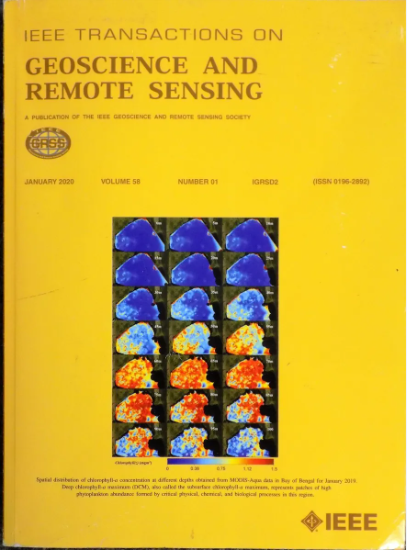带有噪声标签的机载激光雷达点云的语义分割
IF 7.5
1区 地球科学
Q1 ENGINEERING, ELECTRICAL & ELECTRONIC
IEEE Transactions on Geoscience and Remote Sensing
Pub Date : 2024-09-11
DOI:10.1109/TGRS.2024.3458013
引用次数: 0
摘要
高质量的点云标注耗费大量人力和时间,但却是推动激光雷达点云语义分割取得成功的关键因素。在激光雷达点云处理过程中,尽管噪声标注具有较低的标注成本和丰富的跨模态资源(如来自图像的标签),但利用低质量标签的问题却被忽视了。为此,我们首次深入研究了使用噪声标签的机载激光雷达点云语义分割模型的性能,发现它与对象类别和学习阶段密切相关。然后,我们为激光雷达点云噪声学习提出了一种新的语义分割框架,称为自适应动态噪声标签校正(ADNLC),它由弱类别优先、动态监测(DM)和历史选择(HC)组成。通过这些方法,我们可以根据不同类别的具体学习情况自适应地修正其噪声标签。最后,我们为机载激光雷达点云从噪声标签学习中的噪声模拟、精度评估和比较提供了一个全面的流程。我们在 ISPRS 3-D Labeling Vaihingen 数据集和用于密集城市地区语义标注的大规模 ALS 数据集(LASDU)上进行了实验,结果表明我们的 ADNLC 比基线方法分别高出 30% 和 16%,验证了 ADNLC 的优越性,并证明了噪声标签在激光雷达数据处理中的潜力。本文章由计算机程序翻译,如有差异,请以英文原文为准。
Semantic Segmentation of Airborne LiDAR Point Clouds With Noisy Labels
High-quality point cloud annotation is labor-intensive and time-consuming, but it serves as a critical factor driving the success of LiDAR point cloud semantic segmentation. Leveraging low-quality labels in LiDAR point cloud processing is overlooked, despite the fact that noisy annotation has low labeling costs and abundant cross-modal resources (e.g., labels from images). To this end, we thoroughly investigate the performance of airborne LiDAR point cloud semantic segmentation models using noisy labels for the first time and find that it is closely related to object categories and learning stages. Then we propose a new semantic segmentation framework for LiDAR point cloud noisy learning called adaptive dynamic noise label correction (ADNLC), which consists of weak category priority, dynamic monitoring (DM), and historical choice (HC). With these methods, we can adaptively correct the noise labels of different categories according to their specific learning situations. Finally, we provide a comprehensive process for noise simulation, accuracy evaluation, and comparisons in airborne LiDAR point cloud learning from noisy labels. We conduct experiments on the ISPRS 3-D Labeling Vaihingen and Large-scale ALS data for Semantic Labeling in Dense Urban Areas (LASDU) datasets, and the results show that our ADNLC outperforms baseline methods by 30% and 16%, respectively, verifying the superiority of ADNLC and demonstrating the potential of noise labels in LiDAR data processing.
求助全文
通过发布文献求助,成功后即可免费获取论文全文。
去求助
来源期刊

IEEE Transactions on Geoscience and Remote Sensing
工程技术-地球化学与地球物理
CiteScore
11.50
自引率
28.00%
发文量
1912
审稿时长
4.0 months
期刊介绍:
IEEE Transactions on Geoscience and Remote Sensing (TGRS) is a monthly publication that focuses on the theory, concepts, and techniques of science and engineering as applied to sensing the land, oceans, atmosphere, and space; and the processing, interpretation, and dissemination of this information.
 求助内容:
求助内容: 应助结果提醒方式:
应助结果提醒方式:


